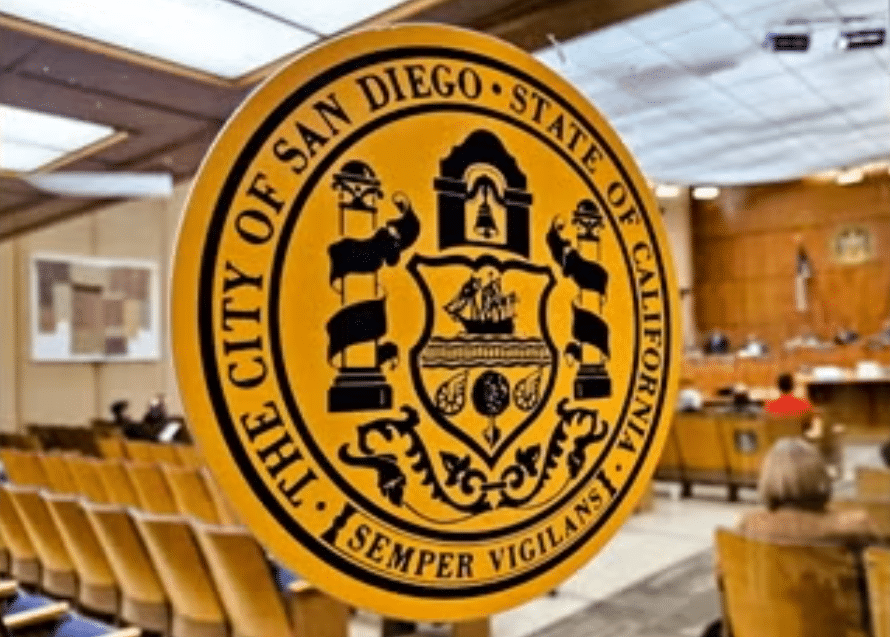
Grocers are accusing lawmakers of ignoring their concerns and rushing through an ordinance they say will actually raise prices for shoppers. Lawmakers are accusing grocers of misrepresenting the measure in defense of their “deceptive business practices.”
And couponers, consumers, the grocery industry and promotions providers are all holding their breath, wondering whether tomorrow will bring about the end of grocery deals as we know them, or whether those concerns are simply overblown.
The San Diego City Council tomorrow is set to hear the second reading and potentially grant final passage to an ordinance that would become the first of its kind in the country to require grocery stores to offer non-digital alternatives to all digital-only deals.
Since its initial passage, the measure has become mired in a messy debate marked by misunderstandings, exaggerations, ambiguity and equivocation, as few of its opponents are acknowleding the proposal’s true intent, while few supporters seem to understand its unintended consequences.
But that isn’t stopping many of them from speaking out – and, in the case of the measure’s leading champion and leading critic, very publicly squaring off.
“It has been refreshing to hear politicians acknowledge they often make problems worse through burdensome regulations. It appears the San Diego City Council didn’t get the memo,” California Grocers Association president Ron Fong wrote in the first of two dueling editorials published Friday in the San Diego Union-Tribune. “We’re proud San Diego is leading the way in fighting corporate greed — and we’re just getting started,” councilmember Sean Elo-Rivera, the sponsor of the ordinance, countered in his own editorial.
As written, and as granted preliminary approval three weeks ago, the ordinance would require that “any grocery store that offers digital discounts to consumers for the purchase of goods must make physical coupons for the digital price available to consumers upon request,” with “digital discounts” defined as any form of coupon, rebate or price reduction available only online.
That raised alarm bells among retailers and manufacturers, as the broadly-worded ordinance would seem to apply to everything from personalized deals, to loyalty rewards, to digital manufacturer’s coupons. And requiring retailers to have hundreds or thousands of paper versions of all digital coupons on hand to dole out to shoppers upon request would be cumbersome at best and impossible at worst.
“Your favorite grocery store will be unable to offer personalized ads,” Fong warned in his editorial. “Loyalty programs, which help you save money on groceries, and often gas, will go away. Grocery prices will be higher in San Diego than in neighboring areas.”
“These claims are acts of desperation and plainly untrue,” Elo-Rivera retorted. “As the author of the law, I know what it does — and does not — do.”
As exclusively reported by Coupons in the News more than two weeks ago, Elo-Rivera later clarified that the ordinance is not meant to “regulate websites or apps. It simply ensures that if a digital discount is advertised in-store or in a weekly ad, it must also be available in a non-digital format.”
That would significantly narrow the ordinance’s scope, regulating only how digital deals are promoted. If a store is going to advertise an “after digital coupon” price in its circular or at the shelf, there must also be a way for seniors, lower-income shoppers, non-English speakers and anyone else without digital access to obtain that same price.
The ordinance itself, as yet, has not been rewritten to include this clarifying phrasing. And merely explaining that an ordinance will not actually do exactly what it says it will do, is not easing opponents’ concerns.
“This new law is as straightforward as it gets,” Elo-Rivera’s editorial argued. “If a grocery store advertises a digital discount in-store or in a weekly ad, that discount must also be available in a non-digital format. Compliance is simple.”
But grocery and promotions industry representatives remain concerned about the ordinance’s current wording. Several wrote emails to council members ahead of the ordinance’s first reading, in what appeared to be a coordinated campaign to present a united front against the ordinance as written – all made similar points, using similar phrasing, in emails sent within 90 minutes of each other. “This ordinance will be impactful in a negative way for grocers and will be difficult at best to implement,” the president of local grocer Jensen’s Foods wrote. The ordinance “would have significant impacts on our customers, and it would be very challenging to implement,” a Kroger executive seconded. “We believe its rapid approval could greatly affect our customers and be challenging to implement,” an Albertsons representative echoed. And from the Association of Coupon Professionals came the argument that the legislation “would have significant impacts to the customers and would be impossible to implement.”
Most of those letters also expressed concern that grocers were not informed or consulted about the ordinance, and many claimed they didn’t know about it until the very day it initially passed. The city council unanimously approved the measure “having neglected to reach out to a single grocery store in the city,” Fong’s editorial complained. “If elected officials are serious about reducing grocery store prices, they should strive to work with grocers, not against them.”
“We publicly announced our intent to bring this policy forward in early October,” Elo-Rivera countered. Council members “held a full public hearing at the committee level a month before the full council vote and met with every industry representative who requested a meeting.” All of those public moves were covered by Coupons in the News and by local San Diego media, so anyone in the industry who was paying attention would have known the full council vote was coming. As to the question of why he didn’t work more closely with the grocery industry, Elo-Rivera’s reply was blunt: “I don’t work for corporate grocers — I work for San Diegans,” he wrote.
Another area of disagreement centers on whether grocery discounts are an entitlement or a marketing tool. Elo-Rivera leans more toward the former. With inflation and tariffs impacting grocery prices and shoppers’ spending power, “San Diegans shouldn’t have to jump through digital hoops or navigate rigged games just to afford food,” Elo-Rivera’s editorial stated. Everyone “deserves a fair shot at the best prices,” and San Diego should “not tolerate deceptive business practices that penalize those already struggling.”
“Stores compete for your business. They compete to have the lowest prices,” and “many also offer exclusive deals as a benefit to loyal customers,” Fong’s editorial countered, implicitly rejecting the notion that every shopper “deserves” the lowest prices. “In most cases, it’s digital technologies that make such discount availability possible. Just to make sure their bases are covered, most stores send out general circular ads as well.”
It’s the content of those “general circular ads,” though, that’s at the center of this whole debate. While most of the arguments have focused on digital access and fairness, the debate is also really about truth in advertising. Critics’ main concern is that stores often prominently advertise what looks like a sale price but is really the price you pay after first clipping a digital coupon. Those are the prices that advocates say all shoppers should have access to, whether or not they are digitally-savvy.
Fong’s editorial offered no defense of this practice. Instead, he complained that Elo-Rivera “falsely claims that prices aren’t transparent. Yet when you walk into a grocery store, you see prices everywhere, thousands of them.”
Exactly. Seeing so many price tags that you’re not sure which one applies to you, is just what critics are complaining about. And yet, in trying to address the perceived problem, the phrasing of Elo-Rivera’s ordinance is so broad that it could be read as pertaining to all digital discounts, whether advertised or not, including the hundreds of digital manufacturer’s coupons offered on any particular day, over which retailers have little control themselves.
If the ordinance passes as written tomorrow, it “will increase San Diegans’ grocery store bills,” Fong argued. Elo-Rivera, in turn, dismissed the “corporate grocery conglomerates and their lobbyists” who “are resorting to false claims and fear-mongering.” Shoppers “are being taken advantage of. And they’re fed up,” he concluded. “Our city must act. And so, we did.”
The city is now poised to act again tomorrow. And shoppers, grocers and lawmakers everywhere will be watching closely to see which of these arguments ultimately wins out.
Image source: City of San Diego











As an industry expert, I believe this proposed ordinance in San Diego raises valid concerns about the unintended consequences for both retailers and consumers. While the intention to make digital discounts accessible to all shoppers, including seniors and lower-income individuals, is commendable, the lack of clarity in the measure’s language could create significant operational hurdles. For example, requiring stores to offer physical coupons for every digital discount could be both impractical and costly, potentially leading to higher prices for everyone. Moreover, it’s concerning that the legislation seems to ignore the evolving role of digital technology in offering personalized discounts, which many customers value. A more refined approach, with better collaboration between lawmakers and the grocery industry, could yield a more balanced solution that ensures fairness without unintended disruptions. The debate should focus on transparency and accessibility, but we must also ensure that solutions don’t create new problems for the very people they aim to help. What are your thoughts on balancing fairness with practicality in such regulations?